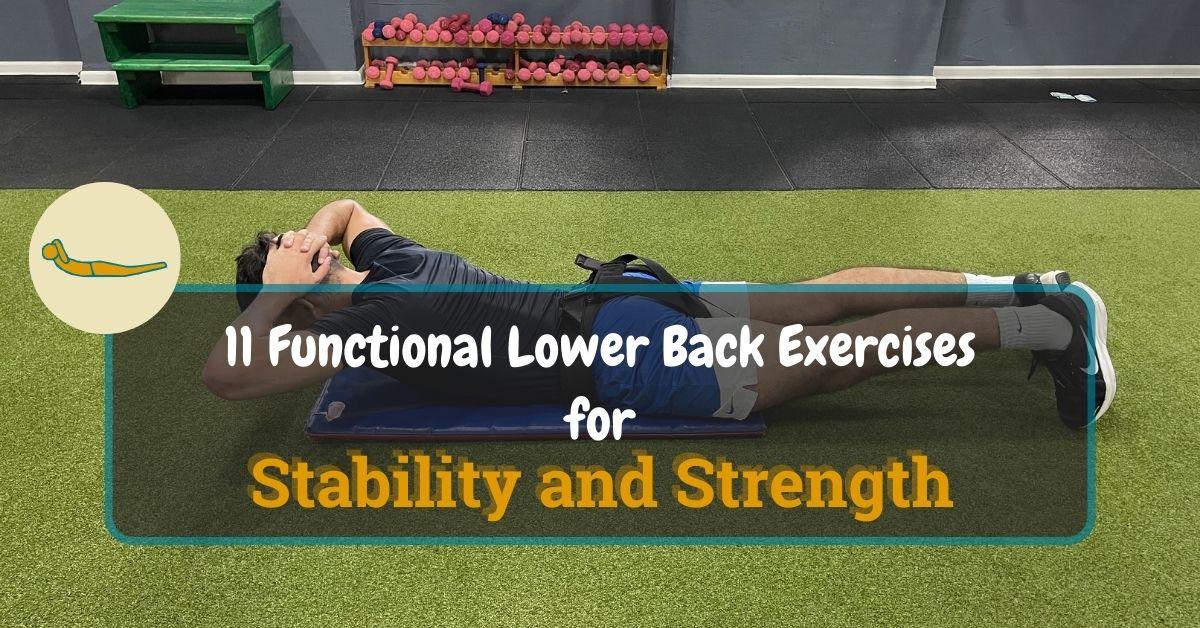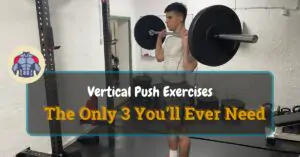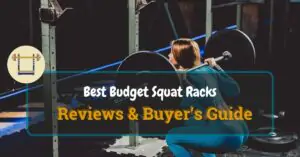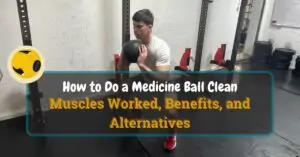Keeping your lumbar spine healthy is now more important than ever before, and that is simply because we, as humans, move less than ever before.
Table of Contents
ToggleDecreased movement, also called hypokinesia, is the primary reason our lower back hurts.
As a Faculty of Sport and Physical Education student, it took me over 30 hours to fully research, evaluate, and single out the best functional lower back exercises for improving the health of your lumbar spine.
After reading the article, you will know 11 efficient ways to improve your lumbar region strength, and functionality and 3 most important exercises for eliminating chronic low back pain.
Let’s cover the most important functional lower back exercises first.
Start Building Your Dream Body Today
Ready to elevate your fitness game without falling into the trap of dull, repetitive routines that just don’t deliver? Imagine sculpting your ideal physique and boosting your health, all while still enjoying life’s pleasures, like those irresistible weekend getaways and your aunt’s legendary cheesecake. With our online fitness and nutrition coaching service, you don’t have to compromise. Dive into a personalized fitness journey that blends perfectly with your lifestyle, not against it. Book your completely free discovery consultation today, and take the first step towards a transformation that doesn’t require giving up the joys of life.

“I was skeptical about online fitness coaching, but Functional Body Savage completely changed my perspective. Vanja and Radomir’s personalized approach and attention to detail have helped me achieve goals I never thought possible. I’m stronger, more confident, and grateful for their guidance.”
Emily Thompson, San Francisco, CA
Learn More About Our Online Coaching ServiceQuick Summary
- The best functional lower back exercises include barbell good mornings, rack pulls, back extensions, supermans, seated foam rolls, dead bugs, bird dogs, glute bridges, kettlebell swings, and many others.
- The three most important exercises for lower back pain are iliopsoas stretch, lower abdominal crunches, and multifidus strengthening exercises.
- To protect your lower back when lifting weights, you must take care of exercise selection, exercise order, and training volume that primarily includes sets and reps.
Functional Lower Back Exercises
- Barbell Good Morning
- Rack Pull
- Back Extension
- Supermans
- Seated Foam Roll
- Dead Bug
- Bird Dog
- Glute Bridges
- Kettlebell Swing
- Stability Ball Reverse Hyperextension
- Side Plank
1. Barbell Good Morning
Barbell good mornings are an excellent posterior chain exercise that effectively targets your hamstring muscles, such as the biceps femoris, semitendinosus, and semimembranosus.
Additionally, the barbell good morning will activate all three gluteal muscles (maximus, medius, and minimus), and erector spinae, also known as the primary lower back muscle.
How to Perform Barbell Good Mornings
- Place the barbell on the rack and load it with the appropriate amount of weight so you can perform at least 8 reps in a row without pausing.
- Place the loaded barbell on your back, step out of the rack, and take two steps back to have enough space to perform the exercise without injuring yourself.
- Assume a hip-width apart position with your feet, slightly bend your knees, and activate your core muscles.
- Your abdominal muscles should be activated throughout the movement to support your lower back and avoid injuries.
- Start the exercise by lowering your upper body towards the floor by bending at your hips only.
- Keep your knee fixed in the slightly bent position during the whole movement.
- When you reach maximal hip flexion, reverse the motion to return to the starting position.
- Repeat for 8 reps, 4 sets, and rest between 2 and 3 minutes between the sets.
2. Rack Pull
The rack pull is a modified deadlift version where you only exercise a partial range of motion, making the whole exercise much easier and safer.
Rack pulls will effectively exercise your gluteus maximus, medius, and minimus.
How to Perform Rack Pulls
- Place the barbell on the rack just below the level of your knees.
- Assume a standing position with your feet flat and a little wider than hip-width apart.
- Place your shins close to the loaded bar, grab the barbell with a pronated grip, and ensure keeping your back in a straight line during the whole movement.
- Start the exercise by pulling the loaded barbell upwards by extending your ankles, knees, and hips simultaneously.
- When you reach the top position, reverse the movement and return the barbell to the starting position.
- Repeat for 10 reps, 4 sets, and rest for 2 minutes between the sets.
3. Back Extension
Back extension is a basic lower back exercise usually recommended by a physical therapist during physical therapy.
However, to strengthen your spine, you must develop superior core stability by exercising your abdominal muscles, such as rectus abdominis, transversus abdominis, obliquus internus, and obliquus externus.
Core strength is paramount to a healthy spin.
How to Perform Back Extension
- Lie on the floor on your stomach.
- Place your hands behind your head or keep them fully extended in front and on the sides of your head.
- Start the exercise by lifting your upper body towards the ceiling.
- When you reach the top range of motion, hold that position for one second.
- Reverse the motion and slowly lower your upper body to the starting lying position.
- Repeat for 12 reps, 4 sets, and rest for as little as possible between the sets.
4. Supermans
Supermans is an advanced back extension exercise that will strengthen your erector spinae muscles.
Only a few exercises, including bodyweight back extension, are harder than supermans, so consider it an advanced version requiring a substantial lower and upper back strength.
While the Supermans exercise is excellent for overall back strengthening to specifically target and enhance the strength and stability of your lower traps, the incline Y raise is an ideal addition to your workout routine.
How to Perform Supermans
- Assume a starting lying position on your stomach with your hands extended over your head.
- Start the exercise by simultaneously extending your upper and lower body towards the ceiling and relaxing your abdominal muscles.
- When you reach the top position, reverse the motion and return to the starting neutral spine position.
- Hold the top position for 15 seconds, then return to the starting position. Repeat this for 4-5 sets.
5. Seated Foam Roll
Seated foam roll is a unique exercise requiring using the foam roller to massage your glute muscles, such as gluteus maximus, gluteus medius, and gluteus minimus.
You can foam roll other muscles, such as the thoracic spine and legs.
How to Perform a Seated Foam Roll
- Place the foam roller on the ground to point towards your direction when standing up.
- Twist the foam roller 45 degrees clockwise.
- Sit on the foam roller with your right gluteal region.
- Cross your right leg over the left one to make the figure “four.”
- Start foam rolling your right gluteal region by rolling it across the foam roller’s surface.
- Move up and down continuously for 15-30 seconds, then change sides.
6. Dead Bug
The dead bug is one of the best abdominal exercises for improving poor posture and correcting pelvic tilt issues.
It will teach your body how to properly contract ab muscles to stabilize the spine.
How to Perform a Dead Bug
- Lie on the ground and extend your arms to align with your chest.
- Bend your knees and hips 90 degrees.
- Lower your right arm and opposite leg to the ground while keeping the other two limbs in the same starting extended position.
- Bring the extended arm and leg to the starting position and repeat with the other two limbs.
- Ensure your lower back is on the ground during the whole movement, and avoid anterior pelvic tilt at all costs.
- Repeat for 8 reps on each side for 4 sets, and rest for 90 seconds between the sets.
7. Bird Dog
Bird dog is another excellent anti-flexion core exercise used by physical therapists to strengthen abdominal and hip muscles essential for maintaining a good posture.
How to Perform a Bird Dog
- Kneel on the ground and place your arms under your shoulders so you have six contacts with the ground (2 toes, 2 knees, and 2 palms).
- Extend your right arm and left leg simultaneously while keeping your torso straight.
- Hold the extended position for 2-3 seconds and return to the starting position.
- Repeat for 8 reps on each side and 3-4 sets. Rest 90 seconds between each set to fully recover.
8. Glute Bridges
Glute bridges are excellent exercises for strengthening the muscles surrounding the hip, including the gluteus maximus, minimus, medius, and other hamstring muscles, such as the biceps femoris.
How to Perform Glute Bridges
- Lie on the floor on your back and bend your knees and hips so you place your heels closer to your butt.
- Place both hands on the floor as support during the hip extension phase.
- Lift your hips from the ground to enter the glute bridge by extending your hips with your glutes and hamstrings.
- Hold the top position in the glute bridge for 2 seconds and return to the starting lying position.
- Repeat for 12 reps, 4 sets, and rest for as little as possible between the sets.
9. Kettlebell Swing
Kettlebell swing is a dynamic hip exercise that will build strength and power to your hip muscles, such as glutes and hamstrings.
How to Perform a Kettlebell Swing
- Assume a standing position with the kettlebell between your legs.
- Bend down and lift the kettlebell.
- Let the kettlebell hang from your hands and between your legs.
- Bend forward in your hips and swing the kettlebell through your legs backward.
- Quickly extend your hips and pull the kettlebell through your legs, propelling it in the air in front of your body.
- Repeat for 8 reps, 4 sets, and rest for 90 seconds between the sets.
10. Stability Ball Reverse Hyperextension
Stability ball reverse hyperextension is a challenging lower back and hip exercise requiring substantial core strength and stability for execution.
How to Perform a Stability Ball Reverse Hyperextension
- Place the stability ball on the floor and lie down on the ball on your stomach.
- Place your forearms down as in the front plank exercise.
- Lift your legs up in the air by performing the hip extension.
- When you reach the top position and end range of motion, reverse the movement and return to the starting position.
- Repeat for 3 sets, 12 reps, and rest for 90 seconds between the sets.
11. Side Plank
Side plank is a simple yet effective unilateral core exercise that will teach your body to become stable in the frontal plane of motion.
How to Perform a Side Plank
- Assume a lying position on your side.
- Place your right elbow on the floor as active support and lift your hips to assume a starting position for the side plank core exercise.
- Hold this position between 25 and 45 seconds, depending on your experience level and fitness.
- Repeat for 3 sets on both sides and rest as little as possible between the sets.
3 Exercises for Lower Back Pain
To eliminate your lower back pain as a regular fitness goer or an athlete, you should regularly perform an iliopsoas stretch because this is one of the rare muscles that belongs to both the anterior and posterior chain. Depending on your daily habits, it quickly gets loose or tight, so you will constantly need to stretch it to avoid pulling your lower back inwards, causing the not-so-comfortable anterior pelvic tilt phenomenon.
In addition, you will need to strengthen your lower abdominal wall further to add protection and stability to your lumbar spine. Lastly, strengthening your small muscles alongside your spine will be necessary to add another layer of protection and further increase the stability of your whole core musculature.
If you are experiencing excruciating pain due to sciatica syndrome, especially in the lower back, buttocks, or legs, check our guide covering the best massagers for sciatica. These massagers and massage guns are specifically selected to help you alleviate lower back and generally lower body pain from a sciatica condition.
1. Iliopsoas Stretch
Iliopsoas is a unique muscle that inserts at your spine and finishes in the anterior pubic bone area.
It is a unique muscle because it is located in both the anterior and posterior areas of our body.
Most of the time, one part of it gets loose, and the other gets tight due to our bad daily habits, such as extensive sitting, or simply because we have weak abdominal musculature.
How to Perform an Iliopsoas Stretch
- Lay on the floor on your back and extend your legs fully.
- Bend your right leg and hold the right knee with both hands.
- Pull the knee towards your chest without lifting your lumbar spine from the floor.
- Hold this position for 15-30 seconds, then change the legs.
- Perform this stretch for 3-4 sets in a row.
2. Lower Abdominal Crunch
Lower abdominal muscles are often neglected but are essential for stabilizing your lumbar spine.
How to Perform Lower Abdominal Crunches
- Lay on the floor on your back and bend the hips and knees 90 degrees.
- Place your arms behind your head or at the sides of your body.
- Lift your butt from the floor using your lower abdominal muscles.
- Repeat for 4 sets, 12 reps, and rest for 90 seconds between the sets.
3. Multifidus Strengthening Exercise
Multifidus is a muscle located along your spine and plays a significant role in keeping your spine stable with your abdominal muscles.
How to Perform a Multifidus Strengthening Exercise
- Lay on the floor on your back and bend your knees and hips so your heels become closer to your butt.
- Keep your hands close to your body or abduct them for 90 egress to make a letter “T” with your body.
- Force contraction of the muscles along your spine without contracting your abdominals.
- This will take some time because you lack muscle memory for this “movement” since it is highly likely you have never done it before.
- Focus on contracting and thinking about the small multifidus muscles around your spine and try to contact them.
- After some period, you will develop adequate mind-muscle connections and succeed at contracting them.
- Repeat for as much as you like and perform this exercise daily.
How to Warm-up for Functional Lower Back Exercises?
To warm up for the functional lower back exercises, you should:
- Raise your body’s temperature – perform a light athletic warm-up or jog for a few minutes. This will raise your core temperature and make your muscles more elastic.
- Perform a dynamic warm-up – include some form of high-knees, butt kicks, and other similar exercises to warm up your lower body, upper body, and core area [1].
- Activate – perform activation for the prime movers in the exercises program. Light hip bridges, hip abduction, and additional core exercises are perfect for this.
How to Protect Your Lower Back When Lifting Weights?
To protect your lower back when lifting weights, you must do the following:
- Carefully select functional exercises
- Put the exercises in a correct order
- Program adequate sets and reps
Let’s cover all these below.
Lower Back Exercises Selection
Always pick exercises that will strengthen your core musculature.
In addition, always avoid exercises that evoke lower back pain, promote excessive anterior pelvic tilt, and force your spine to be placed in an unnatural position [2].
Follow the exercises from the list above, and you are good to go.
Lower Back Exercise Order
Always put exercises in the appropriate order by performing compound movements first and isolation ones second.
Compound exercises are all exercises that activate multiple joints and large muscle groups.
They are more demanding for our energy and central nervous system (CNS), and that’s the primary reason to put them at the beginning of the workout.
Single-joint or isolation exercises can always be safely performed at the end of the workout since they are less energy-demanding and have a smaller chance of injury.
Lower Back Sets and Reps
Carefully select the number of sets and reps to perform.
Three to four sets and 6-12 reps are the best range to follow if you are still inexperienced or just starting.
Instead of modifying these two programming metrics, you can add more resistance for each following workout and stay in the same rep and set zone.
However, this can cause injuries if you progress too fast with the external resistance, so avoid it unless your physical therapist does it for you safely.
FAQs
What Is the Best Exercise for Lower Back?
The best exercise for the lower back is a bird dog. A bird dog is a simple, beginner-friendly, yet very effective core exercise for correcting anterior pelvic tilt issues and strengthening your ab muscles.
What Are the Best Low-Impact Exercises for Lower Back?
The best low-impact exercises for the lower back are Superman, bird dog, barbell good morning, and glute bridges. These back and abdominal exercises will ensure you build a strong and functional core, preventing excessive anterior pelvic tilt and lower back pain.
Are Squats Enough for Lower Back?
No, squats aren’t enough for the lower back. To build a strong, stable, and functional lower back, you must perform more hip-hinge exercises such as deadlifts and various back extension exercises such as supermans.
How Can I Train Lower Back at the Comfort of My Home?
You can train your lower back in the comfort of your home by purchasing adjustable kettlebells.
Adjustable kettlebells are perfect for different forms of functional workouts, and they can change the resistance, so you don’t need to buy more than one piece of equipment.
This is excellent because you will save space at your home and won’t need to spend extra money on gym equipment to perform some exercises requiring different external resistance.
I suggest reading our guide on the best adjustable kettlebells to pick the best one that will suit your needs, goals, and budget.
In the comments below, let me know your thoughts on these lower back exercises and whether they helped you alleviate lower back pain.
Start Building Your Dream Body Today
Ready to elevate your fitness game without falling into the trap of dull, repetitive routines that just don’t deliver? Imagine sculpting your ideal physique and boosting your health, all while still enjoying life’s pleasures, like those irresistible weekend getaways and your aunt’s legendary cheesecake. With our online fitness and nutrition coaching service, you don’t have to compromise. Dive into a personalized fitness journey that blends perfectly with your lifestyle, not against it. Book your completely free discovery consultation today, and take the first step towards a transformation that doesn’t require giving up the joys of life.

“I was skeptical about online fitness coaching, but Functional Body Savage completely changed my perspective. Vanja and Radomir’s personalized approach and attention to detail have helped me achieve goals I never thought possible. I’m stronger, more confident, and grateful for their guidance.”
Emily Thompson, San Francisco, CA
Learn More About Our Online Coaching ServiceReferences:
- https://www.ncbi.nlm.nih.gov/pmc/articles/PMC7126248/
- https://www.ncbi.nlm.nih.gov/pmc/articles/PMC9565175/





